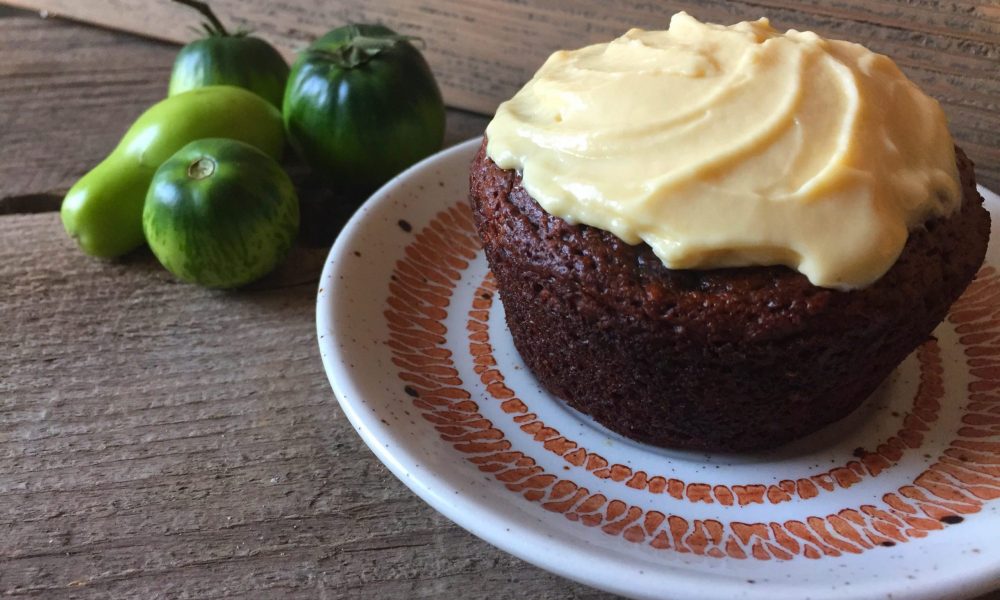If you’re anything like us, you’ve got a boatload of green tomatoes to work through this harvest season. Frosts came a bit early this year for a lot of us, so tomatoes were picked before fully ripening, in order to save them from frost damage. A lot of them will ripen on their own indoors, eventually, but there is also PLENTY you can do with the green, unripe ones in the meantime.
You’ve probably heard of fried green tomatoes. Wonderful things. Salsa verde. Muy delicioso. And of course the many many relishes, dips, and pickled recipes like Chow Chow, Piccalilli, Chutney, etc. All fantastic. But have you heard that you can also bake with green tomatoes?
Why yes, yes you can.
Green tomatoes work the same way as zucchini does in baked goods. They provide moisture, and a bit of fibrous heft, while not affecting the taste in an overwhelming way. Even the most finicky, texture-sensitive palates are likely to not even notice the addition. As an added bonus, green tomatoes are packed with Vitamins A, C, and potassium. Look at that, your decadent dessert just became a health(ish) food. You’re welcome.
Ready to try? Grab your muffin tins and let’s go!
Dark Chocolate, Green Tomato & Yogurt Cupcakes
Makes 8 Medium-sized cupcakes
Ingredients:
1 Cup All Purpose flour
1/2 Tsp Baking Powder
1/2 Tsp Baking Soda
1/4 Tsp Pink Himalayan Salt
1/2 Cup Cocoa Powder
1/4 Tsp Cinnamon
3/4 Cup Dark Chocolate Chips
2 Eggs
1/2 Cup Plain Yogurt
1/2 Cup Unrefined White Sugar
1/2 Cup Light Brown Sugar
1 Tsp Vanilla Extract
1 1/2 Cups Grated or Pureed Green Tomato
Butter for greasing tins (optional)
Baking Directions
First step is grating or semi-pureeing your green tomatoes. I’ve done both, but prefer to pulse them in the blender a few times to get a chunky puree, as grating may leave some more visible tiny tomato skin pieces in the final product. Taste is not really affected, though. When you’ve reached 1 1/2 cups of grated/pureed tomato, leave them in a colander or mesh strainer for a few minutes, up to 30, to drain off excess water.
As the tomatoes are draining, preheat the oven to 375 degrees. Prepare your muffin tins by either greasing them with butter, or lining with paper cups.
In a small bowl, mix your dry ingredients together, up to and including the chocolate chips.
In a larger bowl, mix the eggs, yogurt, sugars, and vanilla. Then fold in your tomato.
Add your dry ingredients to the wet, and gently mix together until the dry ingredients are moistened. Do not over-mix. Chunks are fine! You’re not going for a silky smooth batter, rather a semi-rough looking, but moist and airy blend.
Spoon mixture into muffin tins, filling about 3/4 full. Fill any empty tin spaces with water, to ensure even baking.
Bake for 20-25 minutes, or until a toothpick poked in the center comes out clean. Cool for 10 mins before removing from the tins. Let cool completely before adding your favorite frosting, if doing so. These moist, delicious treats can be savored with or without.
Enjoy!
Guest Submission by:
-Breanna
@ameliaameliorate on Instagram




